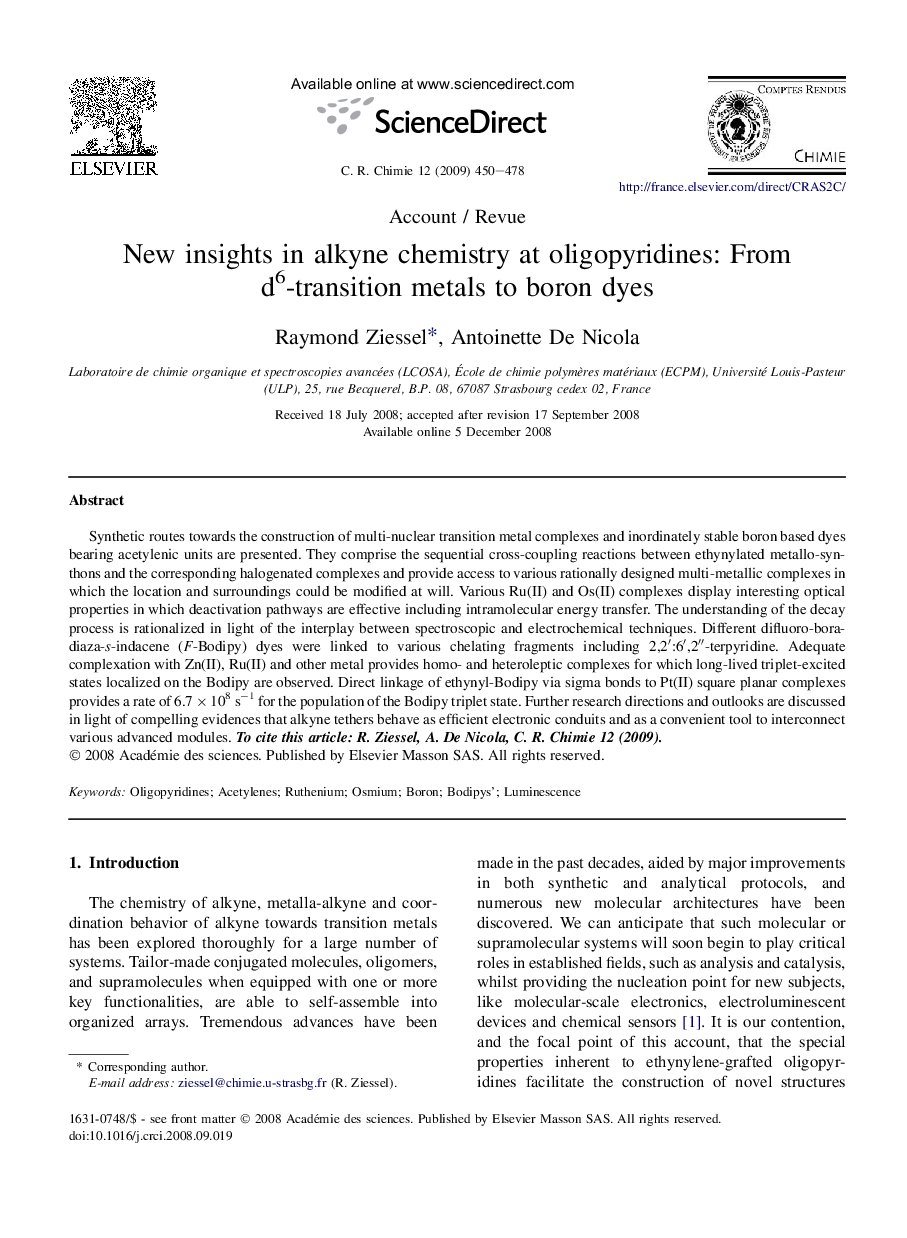| Article ID | Journal | Published Year | Pages | File Type |
|---|---|---|---|---|
| 171411 | Comptes Rendus Chimie | 2009 | 29 Pages |
Synthetic routes towards the construction of multi-nuclear transition metal complexes and inordinately stable boron based dyes bearing acetylenic units are presented. They comprise the sequential cross-coupling reactions between ethynylated metallo-synthons and the corresponding halogenated complexes and provide access to various rationally designed multi-metallic complexes in which the location and surroundings could be modified at will. Various Ru(II) and Os(II) complexes display interesting optical properties in which deactivation pathways are effective including intramolecular energy transfer. The understanding of the decay process is rationalized in light of the interplay between spectroscopic and electrochemical techniques. Different difluoro-bora-diaza-s-indacene (F-Bodipy) dyes were linked to various chelating fragments including 2,2′:6′,2″-terpyridine. Adequate complexation with Zn(II), Ru(II) and other metal provides homo- and heteroleptic complexes for which long-lived triplet-excited states localized on the Bodipy are observed. Direct linkage of ethynyl-Bodipy via sigma bonds to Pt(II) square planar complexes provides a rate of 6.7 × 108 s−1 for the population of the Bodipy triplet state. Further research directions and outlooks are discussed in light of compelling evidences that alkyne tethers behave as efficient electronic conduits and as a convenient tool to interconnect various advanced modules.
